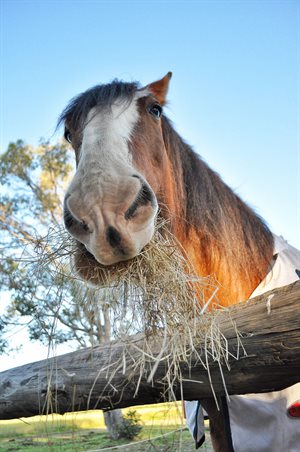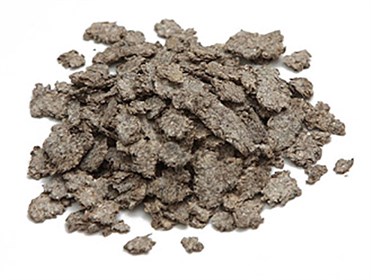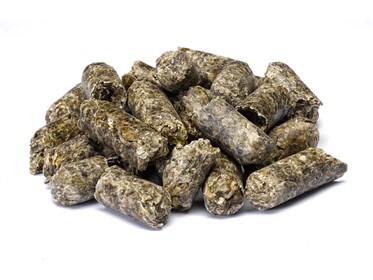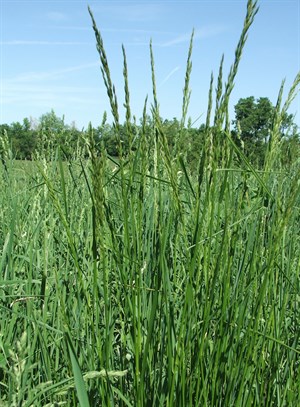|
This article has appeared previously with Equestrian Life. To see what's in our latest digital issue, click here.

There are many ways to give your horse all the nutrition they need, however, there are also many myths and misconceptions.
Feeding myths busted
There are many ways to give your horse all the nutrition they need, however, there are also many myths and misconceptions. Some are harmless, others can be potentially devastating. Here we expose several of the common myths floating around the horse world today.
Myth 1: Feed bran mashes for a laxative and to prevent colic
BRAN MASHES HAVE been recommended as laxatives in the past, but their effectiveness has been refuted by scientific trials that show no increase in fecal water content or softening of stool. Bran mashes do not prevent colic either. This myth comes from human nutrition, where adding bran to the diet increases fibre consumption and prevents constipation. Whilst bran does contain fibre, it has more of an effect on the human digestive tract than the horse’s. Bran contains a similar level of fibre as oats, so for horses with a large hindgut designed specifically for fermenting fibre, there are better sources of fibre, such as hay. Furthermore, regularly feeding too much wheat bran can be problematic as wheat bran is high in phosphorus and low in calcium, which can cause mineral deficiencies and bone de-mineralisation over the long term.
Myth 2: Grass provides everything my horse needs
Whilst good doers may be able to maintain their weight well on pasture or hay, it is unlikely they are meeting their daily vitamin and mineral requirements. In the wild, horses roam over vast grasslands and consume a wide variety of forages. Our domesticated horses have a limited paddock area and pasture species to graze and often have increased demands from work and performance requirements. Pastures around Australia are generally deficient in selenium, zinc and copper, which can lead to deficiencies in horses grazing on these long term. When pasture is cut for hay, the hay is also deficient in these minerals as well as vitamin A and vitamin E. Therefore, if your horse is only getting pasture and hay, it is likely it is not meeting its daily vitamin and mineral requirements.
There are many ways you can conveniently deliver all the vitamins and minerals your horse needs without the calories associated with a commercial feed. A good quality powdered supplement can be mixed in to a handful of damp chaff, or a pelleted supplement can be offered straight out of your hand to your horse.
Myth 3: Beet pulp must be soaked before feeding and is high in sugar
False and false! Beet pulp is a byproduct of the sugar industry – the pulp is what is left after all the sugar is removed. This means that beet pulp actually has a very low sugar content. The digestible fibre in beet pulp is a useful energy source for horses suffering from grain intolerances, muscle disorders and laminitis. Beet pulp is a highly digestible fibre source, where up to 70% of the fibre is fermented and converted to energy, whereas only 30-40% of the fibre is fermented in good hay.
While there is no harm in soaking beet pulp before it is fed, it does not have to be. Some horse owners believe that, due to its absorptive capacity, beet pulp will swell once it encounters liquids in the stomach, causing the stomach to rupture. There are no documented cases of this and it is unfounded. The holding capacity of the stomach is under hormonal control. As the stomach expands, the hormone motilin stimulates the emptying of the stomach into the small intestine, so there is little chance of the stomach perforating. It is also untrue that beet pulp may swell in the oesophagus as the beet pulp cannot absorb saliva fast enough for this to occur. That said, many of the forms of beet pulp available in Australia are compressed pellets, which are very firm. Soaking in water can improve palatability.


Myth 4: Protein makes horses fizzy
There is no scientific data to suggest protein consumption has anything to do with mental attitude. In fact, energy from starches is more likely to affect temperament because of a surge in blood glucose. The common myth that lucerne makes horses hot because of the protein content is unfounded, even though the protein content is higher in lucerne (16-20% CP) compared to grass hay (4-14% CP). Any changes in behaviour associated with lucerne are more likely to be linked to the higher energy content of lucerne (8-10MJ/kg) compared to grass hay (6-9MJ/kg), giving the horse more calories than its workload requires. All horses require protein to maintain normal body function such as forming body tissues; enzyme, hormone and antibody production; transporting nutrients in the blood and cells; as well as repairing muscle damage after exercise.
Myth 5: Feeding too much protein causes developmental orthopedic disease (DOD)
There are many factors that contribute to DOD , including but not limited to genetics, workload, conformation and nutrition. Whilst nutrition is an important factor for DOD, research points to a link with the total energy content of the diet, the type of feed fed, and a prolonged glycemic response to a meal, rather than an excess of protein causing DOD.
Young, growing horses require a balanced diet containing significant protein, energy, vitamins and minerals, to ensure correct growth and development. Problems with bone and cartilage are usually seen when young horses consume too much energy and exhibit rapid growth rates. Furthermore, diets high in non-structural carbohydrate (starches and sugars) have been linked to abnormal cartilage development in young horses. Feeding young horses alternative energy sources such as fibre and fat can be beneficial. A balanced diet designed by an equine nutritionist, coupled with regular weighing and measuring, will ensure young horses are properly nourished for safe and steady growth.
Myth 6: Garlic helps boost a horse’s immune system
The perceived benefits of feeding garlic to horses include alleged antiseptic and antibiotic properties, appetite and immune-boosting properties, improvement of respiratory problems, natural fly repellent and wormer, and an aid to ulcers and coughs. Although these benefits may be true in humans, they have not been proven in horses. Care should be taken with feeding garlic, as too much can be potentially toxic and cause a condition called “Heinz body anaemia” (irreversible damage to haemoglobin, the oxygen-carrying pigment in red blood cells). The spleen will begin destroying these mutated cells and if significant amounts of garlic are fed over time, the horse can become anaemic. Anaemia is a condition in which the blood is deficient in red cells, haemoglobin, or total volume. Signs of anaemia may include poor performance, lack of energy, weakness, lethargy, loss of appetite, and depression.
Myth 7: Pelleted feeds are of lower quality than muesli feeds
Many owners believe pelleted feeds have less nutritional content than raw grains or textured feeds, due to being “processed”. Some even think pellets are merely made of leftover feed ingredients or floor sweepings!
Pelleted horse feeds begin with essentially the same ingredients that go into textured feed. The grains are dried and finely ground, breaking up the seed coatings and kernels. The ground-up grains are then mixed with other ingredients such as vitamins and minerals into a paste, processed into their pellet shape, cooled and dried. This processing of the grain is important to improve digestibility.
Reputable feed manufacturers have strict quality control measures to ensure the highest quality products. Good quality pellets should have uniformity in colour, shape, texture and composition.
Myth 8: My horses have access to a mineral block in their paddock so they don’t need anything else
If your horse maintains his weight on pasture and hay alone, that’s great. However, the common practice of putting a mineral block in the paddock and thinking all is well is not the case. There is evidence that horses can regulate sodium and chloride intake if free-choice salt is available. Therefore, if offering a salt block in the paddock, it is best to be a plain salt block or pink Himalayan rock salt. There is no evidence that a horse has the ability to selectively consume other trace minerals if needed.
Generally, the levels of minerals in a mixed mineral block are not sufficient to meet the requirements of the performance or young horse. For example, if you had a 1kg trace mineral block with a typical composition of 60-90% salt, 2-5% molasses, 10-20% calcium, 3-8% phosphorus, 100mg copper, 1000mg iron, 200mg zinc, 100mg manganese, 1000g potassium, 150mg iodine and 200-400mg cobalt, a horse competing at medium level in dressage, show jumping or endurance fed with good quality grass hay and oats would need to consume half a block a day (or 3.5 blocks per week!) to fully meet requirements for these trace minerals. Breeding or growing horses require even more! While they may meet requirements for some of the minerals, such as manganese and zinc, they would be consuming excessive salt, iodine, calcium and phosphorus, and make the diet unbalanced once again!
Myth 9: Feeding oats makes horses go crazy
Oats are the safest of all cereal grains for horses. Oats contain a similar energy content to barley and corn, but are significantly more digestible in their raw state, contain a good level of digestible fibre, and do not require processing before feeding. Oats are very palatable and well digested so a meal of oats, as with other grains, can produce a glucose peak in the blood shortly after a meal.
Should a horse exhibit a behaviour change after a meal containing oats, it is more likely linked to increased energy intake (calories) than the oats themselves. While starch-sensitive horses might have this reaction to oats, they are just as likely to behave in a similar manner after eating any cereal grain, thus a diet containing energy from fat and fibre may be more suitable.
Myth 10: The label on the bag says ‘complete’ feed so I don’t need anything else
The feed might be a “complete” feed in terms of delivering all the protein, vitamins and minerals required when fed at the recommended rate, but more than likely does not contain enough fibre to maintain optimal gastrointestinal health. Horses require 1.5% of their body weight in forage per day to provide them with fibre to maintain gastrointestinal health and minimise the risk of digestive upsets, colic or gastric ulcers. This forage can be from pasture, hay or chaff. When designing a feeding program, you should meet your horse’s forage requirement first then top up the calories and nutrients with a premixed or “complete” feed if required. Every premixed complete feed has a recommended feeding rate. If horses are not fed the minimum recommended amount each day, they will not get an adequate supply of all nutrients. Therefore, it is necessary to make up the shortfall by adding a vitamin and mineral supplement to the ration.
Myth 11: The best way to get a horse to lose weight is to lock it up
Locking up a horse that needs to lose weight is one of the worst things you can do. To get a horse to lose weight, it is a matter of the horse using more calories than it consumes. Locking up the horse to prevent free access to pasture is fine, as long as the horse still has access to forage (such as hay in a slow feeder) throughout the day. The absolute minimum forage that a horse needs to maintain gastrointestinal health is 1% of their body weight per day. Low quality hay such as stalky or last season grass hay is perfect, provided it is not mouldy. To further reduce the calories in the hay, it can be soaked before feeding (30mins in warm water or 60mins in cold). Failing to provide hay to maintain gastrointestinal health can initiate other problems such as gastric ulcers. While your overweight horse is on their diet, it is really important to still ensure that protein, vitamin and mineral requirements are met by providing a low-calorie, low-intake vitamin and mineral supplement.
Exercising overweight horses is important to achieve weight loss. As well as burning calories, exercise increases insulin sensitivity and reduces insulin levels. The aim should be for 5% loss of body weight over a 4-6 week period.
Myth 12: Laminitis only occurs with fresh green grass in Spring
Laminitis can occur year-round and there are many more factors that can induce it than green grass! Laminitis can be induced by starch overload, insulin resistance, Cushing’s disease, untreated infections, toxic weed or fertilizer ingestion, retained placenta, equine metabolic syndrome … the list goes on!
Pasture-related laminitis depends on the time of the year, the weather, time at pasture and the abundance of forage your horse has access to. Horses have a limited ability to digest some forms of carbohydrates, including fructans (the storage form of sugar found in pasture) and starch contained in cereal grains. Overflow of undigested starch and/or fructan from the small intestine into the hindgut results in microbial fermentation of these carbohydrates. As the microbes digest carbohydrates, they produce acid, which causes a drop in hindgut pH. Extended periods of very low pH (high acidity) in the gut create an unfavourable environment for some of the microbes, resulting in microbial death, toxin release and damage to the intestinal lining. This condition, known as “hindgut acidosis”, can lead to the onset of laminitis.
If your horse has access to lush, green pasture, is on a high-grain diet or is predisposed to laminitis, it is advisable to add a time-release hindgut balancer to their diet to help maintain a normal hindgut environment. It is also best to contact an equine nutritionist for advice.

Image: KER.
Myth 13: Feeding horses yoghurt helps with gastric ulcers and improves the bacteria population in the hindgut
There is no evidence that yoghurt has any effect on gastric ulcers or that viable bacteria reach the hindgut to contribute to the microbial populations there. Yoghurt is a milk-based product. Milk is digested by the enzyme lactase and absorbed in the small intestine. There is evidence to suggest that horses, like some other animals, lose the ability to digest lactose after they are weaned. In addition, many yoghurts are high in sugar, which is not ideal for the horse’s digestive system. There is no data that has demonstrated that the bacteria in yoghurt survive the equine digestive process, including high acidity, and are still alive when they reach the hindgut where they are required. If you want a proven way to help the microbial population of the hindgut, it is best to use a commercial equine probiotic.
For further information about feeding your horse, or for a tailored nutrition program for your horse, contact a nutrition advisor at Kentucky Equine Research.
Source: KER
|

